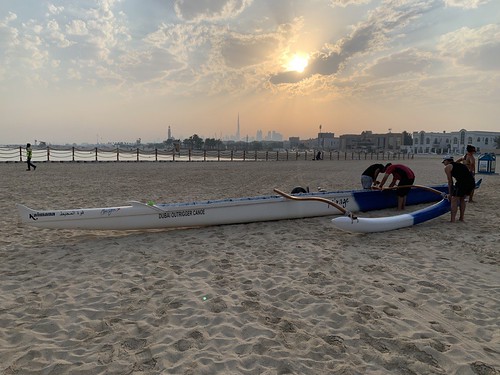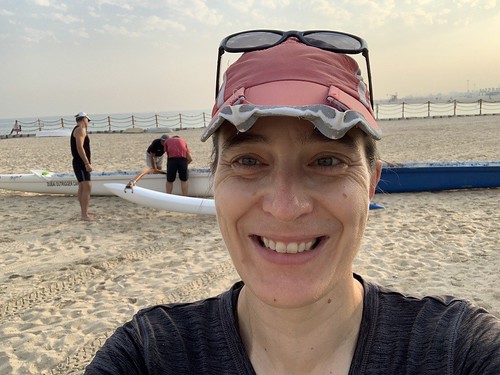I’ve visited Brighton a few times before, though haven’t done some of the more classically touristy things there. Luckily, back before the Lord Mayor’s Show and before work got busy and before the winter weather arrived, I found a weekend to visit. This was mostly because Piran moved to Brighton during lockdown, which means I’ve lost a London-based friend, but gained one on the south coast, who now also boasts a very comfortable guest suite.
I went down on the train Friday night, and we spent Saturday tromping around the South Downs, with stops at a couple ancient hill forts and a dew pond and, most notably, lunch at the Gunn Inn in Findon. Piran rhapsodised about a lamb dish he’d had there once, so it seemed a good bet. And indeed it was. The fact that I can’t remember what I ordered as my main course detracts not at all from the story because what I do remember, indeed what still fills my dreams at night, is that we started by splitting a portion of cheesy fries which were disturbingly, astonishingly, addictively delicious. They came dressed not just with melted cheese but with chunks of fried chorizo, garlic aioli (yes I know that’s a tautology) and a drizzle of spicy oil. (Probably the fat from the chorizo. With a liberal dusting of crack.) They were so good that we did not even pause to photograph the dish when it arrived but did manage to finish our mains and a pint or two and were even persuaded to order dessert.

Dessert was this. Prompting the above expression for me, which clearly translates as “Are you kidding me?”
So that was Saturday in Brighton. Rambling, cheesy fries, and dinner with some of Piran’s Brighton gang at another pub. Good day, but just a warm-up for Sunday which started with a leisurely breakfast but had two very Brighton-y gems in store. First on the agenda was the 125th London to Brighton Veteran Car Run, the world’s longest-running motoring event and a perfectly quirky, perfectly photogenic, perfectly bloggy thing.
Established 1896, the first event was dubbed The Emancipation Run”, to celebrate the enacting of the Locomotives on Highways Act 1896. This legislation marked the end to some of the more restrictive limits to the use of horseless carriages on English roadways, including a speed limit of 4mph in the country and 2mph in towns. It’s commonly believed the 1896 legislation also repealed the infamous Red Flag Act, which “stipulated that self-propelled vehicles should be accompanied by a crew of three; if the vehicle was attached to two or more vehicles an additional person was to accompany the vehicles; a man with a red flag was to walk at least 60 yd (55 m) ahead of each vehicle, who was also required to assist with the passage of horses and carriages.” The Red Flag act had, in fact, already been repealed in 1878, but it’s an enduring myth of the Veteran Car Run commemorated by the ceremonial tearing in half of a red flag at the start of each year’s run.
Back in 1896, with a exhilarating new speed limit of 14mph, a group of 33 vehicles left from the Metropole Hotel in London (after a commemorative breakfast, of course). 17 of the 33 managed the entire 54 miles to Brighton, with the first finishing in 3 hours and 44 minutes, just squeaking in under the limit at an average speed of 13.9 mph. This rather dismal percentage of finishers is an enduring feature of the race, with vehicles regularly conking out, sometimes being revived by specially-trained mechanics from the Royal Automobile Club, and occasionally having to be pushed across the finish line hours after the leaders arrive. However one shouldn’t be too dismissive, as the central requirement to participate in the Veteran Car Run is that the vehicle entered must have been manufactured before 1905. The oldest car to participate this year was made in 1894.

Harry Lawson, organiser of the 1896 Emancipation Run, and his wife, at the start of the inaugural event
So on a dazzlingly clear and unseasonably warm morning, Piran and I headed to the sea front to witness the arrival of the first cars, expected around 10:30am. The traditional route starts at Hyde Park and runs past Buckingham Palace, through Brixton and Croydon and down the A23, finishing on the Brighton sea front at Madeira Drive. However, at 10:30 there was nary a car to be seen. Nor at 11am or 11:30 or even 12. So we filled the time with a stroll down Brighton Pier and along the sea front and through Brighton’s famous Lanes. And since I’ve talked about sea fronts and piers before, let’s just skip over that and get to the part where the cars finally stared arriving.

Here’s the final stretch, viewed from above, where each car stopped and the driver was interviewed about their journey, their vehicle, and, especially notable, the general excellence of the weather that day, all of which was broadcast over speakers to the assembled throng.
We made our way down to street level and found a spot near the pedestrian barriers to watch the cars trundle past close up.
Finally we fetched up at the paddock where the cars were parked and where the drivers took a well-deserved break for refreshments in a nearby tent. Each car is also required to carry at least one passenger, and many people were wearing period dress, which definitely adds to the festive atmosphere. (Though I can imagine that in years when the weather does not cooperate one might fervently wish they had chosen Gore-Tex over tweed.) Some participants also carried picnics in special wicker baskets that were clearly part of the car’s design. Those were the days! Screw the satnav and the anti-lock brakes. Give me brass lanterns for headlights and a dedicated storage area for my stilton and champagne!

This fetching green-and-yellow beauty lurched into its spot with the aid of the his-vis-clad Royal Automobile Club Official, who helped stop it in place after the driver uttered the phrase of the day: “The brakes don’t work backwards!”

This paint job was particularly festive, though all the cars we saw were clearly well-loved and well-kept. Many have been in the same family for generations, and at least one was bought new by the current driver’s great-grandfather or great-great-grandfather or some such. Possibly in France. (Perhaps I should have been taking notes.)
The parking area was an ever-changing feast of antique motoring, because cars were constantly arriving, parking up, then leaving and being replaced by new arrivals. There were more than 300 cars entered, along with a smattering of vintage bicycles (including four penny-farthings) and one 1903 Minerva single cylinder motorcycle. After a suitable rest period, some cars were then loaded onto car-carriers to return from whence they came. However, other drivers proudly declared they’d driven their cars from home to the start line in London, then to Brighton, and would then drive straight back home to their garage in Little Snerglington-by-Snort or wherever it was they came from.
Eventually we tired of the never-ending rows of polished brass and glossy black and wandered to the city centre to try and catch a few of the cars in traffic. This was, for me, the most surprising part of the whole event. For some reason I’d assumed that the Veteran Car Run had some sort of priority lane from London to Brighton to keep these precious vehicles and their startlingly-poorly-protected passengers out of the regular flow of 21st century traffic. Not so.

All those cars were mixed in with everyone else on the road for the whole 54 miles! And some of them are so small. I mean look at those poor guys… that thing is basically a one hundred and twenty year old go-cart with a numberplate. Thankfully, participants in the Veteran Car Run and not allowed to exceed an average speed of 20mph.
By this time we'd had our fill of cars, however photogenic, and no one was offering US any stilton and champagne, so we wandered off. Astute Go Stay Work Play Live Readers will no doubt remember that I promised two very Brighton-y gems in the opening paragraphs of this post. However, it took me six weeks to get this written and posted, so I've decided to take my time and keep that in my back pocket for a future edition. In the mean time, I've opened a theatre show in London and done some work on another upcoming project, and continued battling with the boat engine, and put up the Christmas decorations and safely topped up my mince pie levels for another year. This post is shorter than some, but I'm taking the "done is better than perfect" view on this one. So, by the power vested in me as Supreme Leader of the Go Stay Work Play Live Global Consortium, I hereby declare this blog post DONE.


















































